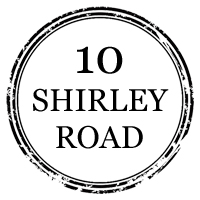Shirley Centre: Identity | Well-being | Learning
New ‘Contemporary’ Community Centre,
Citizen Hub in Shirley Community Reserve,
10 Shirley Road, Richmond, Christchurch.
Community Education & Support Services in
Learning Libraries.
Relocate the current Shirley Library
from The Palms car park.
New Library with Learning Spaces
& Meeting Rooms.
New Inclusive Accessible Playground
& Shirley Playcentre.
Connecting Communities around Shirley Road:
Shirley, Dallington, Richmond, Edgeware, St Albans & Mairehau
https://www.10shirleyroad.org.nz/shirley-centre-map/
“You Are Here”: a place to be, within our communities.
https://www.10shirleyroad.org.nz/you-are-here-a-place-to-be/
“Before the Canterbury earthquakes, the facility was Shirley Primary School (1916-1977) and Shirley Community Centre (1979-2011).
The facility was damaged in the 2010/2011 Canterbury earthquakes and then demolished in 2012 after being classified as unsafe for use.
The building was home to a number of community organisations and programmes which enriched Shirley and helped people to connect with each other.
These organisations and programmes included:
Senior Net, New Zealand Society of Genealogists, Pottery programmes, Parent Centre, Santa Workshop, Canterbury Embroiders, Shirley Recreational Walkers & Shirley Leisure Group.
After the earthquakes, many members from the Shirley community raised concerns that not replacing community hub in the reserve would mean that social isolation and lack of community collaboration would become worse.”
https://letstalk.ccc.govt.nz/SCR/SCRHistory
Since 1915, this location at 10 Shirley Road/Shirley Community Reserve, has been an important part of our communities identity.
First as the original Shirley Primary School, then as the Shirley Community Centre, until the building was demolished in 2012, due to earthquake damage.
This site has historically been a ‘place of learning’ & a landmark on Shirley Road.
Leaving it empty without a community building, is a constant reminder of what we have lost, that our communities have been forgotten & we have no community legacy for the future generations.
Shirley Library is situated inside the Coastal-Burwood ward (The Palms carpark), although it is seen as a Shirley/Richmond facility.
The building has recently been refurbished to include NZ Post services. The building is already congested, with the Shirley Library, Service Centre & Coastal-Burwood Governance unit sharing this space.
This library is smaller than most ‘suburban’ libraries in Christchurch & yet is consistently one of the top providers of events/activities, even with no dedicated learning spaces.
Approx 25,000 people live in the Innes ward, which currently has no ‘suburban’ Christchurch City Library.
Our population is increasing due to in fill housing & social housing developments: https://ccc.govt.nz/culture-and-community/statistics-and-facts/community-profiles/papanui-innes/innes-ward.
My vision is for a civic managed facility, citizen hub/’home’ base, a purpose built building for a bigger Shirley Library with adjustable Learning/Meeting spaces in the centre, surrounded by library ‘rooms’/spaces.
Set amongst the significant trees, with an updated inclusive playground, half basketball court & Dudley Creek in the background.
‘Residential feel’ to fit into the neighbourhood & incorporate some heritage design as this location is next to the Dudley Character Area.
https://ccc.govt.nz/assets/Documents/Consents-and-Licences/resource-consents/Forms/Character-Areas/Dudley-Design-Guide-2019.pdf
Inclusive: day & night opening hours, available 6 or 7 days, adjustable learning/meeting spaces, that can be booked & utilized by everyone, residents can just be in the space (home away from home, our communities ‘living room’) without having to attend an activity/event.
Accessible: Onsite & street parking, bus stops for the 7: Halswell/Queenspark, Or: The Orbiter & 100: Wigram/The Palms via Riccarton routes, are located outside 10 Shirley Road, and across the road, by Shirley Primary School.
Multifunctional space that can cater for a wide range of “cultural, educational and recreational activities” that bring people from the surrounding communities:
Shirley, Mairehau, St Albans, Edgeware & Richmond, together.
“The public library is the one place, potentially the only civic place, where people are welcome to come no matter their background, their politics, their beliefs. People who are disenfranchised, have mobility issues, are socially isolated, the very old and the very young, it can be the only comfortable place to be – and their ideas are welcome.”
“We are becoming a bastion of wellbeing and welcome for people,” says Kat Cuttriss, Hutt City Libraries manager and chair of Public Libraries of New Zealand.
https://www.stuff.co.nz/entertainment/books/113926856/how-new-zealand-libraries-are-adapting-to-the-21st-century
“Urban planners seeking to stabilize neighborhoods are focusing on the critical role that “third places” can play in strengthening our sense of community. Third places have a number of important community-building attributes. Depending on their location, social classes and backgrounds can be “leveled-out” in ways that are unfortunately rare these days, with people feeling they are treated as social equals. Informal conversation is the main activity and most important linking function. One commentator refers to third places as the “living room” of society.
Many city planning efforts to reinvigorate metropolitan neighborhoods now include specific steps to create third places, especially public spaces, to try and break down social siloes.”
https://www.brookings.edu/blog/up-front/2016/09/14/third-places-as-community-builders/
